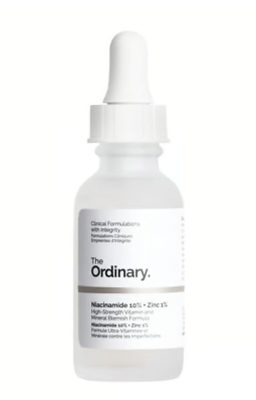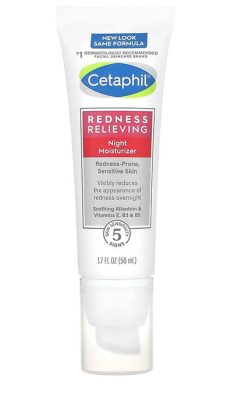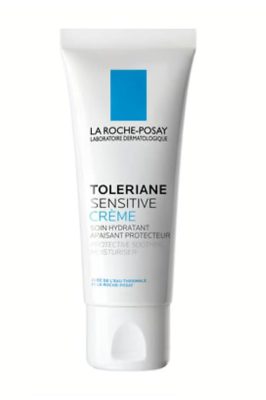Niacinamide, also known as vitamin B3, has been making waves in the beauty industry, prompting many to take notice of its potential benefits for the skin.
Despite being a well-established ingredient, niacinamide has recently garnered renewed attention, with many touting its virtues as a skincare powerhouse.
In this article, I’ll shed light on the significance of niacinamide and its role in skincare, providing insights into its benefits and optimal usage.

When should niacinamide be used in a skincare routine? What are the benefits?
One of the key attributes of niacinamide is its ability to enhance the skin’s immunity. By bolstering keratin production and fortifying the skin’s protective layer, niacinamide helps shield the skin from environmental aggressors, reducing the risk of infections and skin irritations.
Additionally, niacinamide contributes to the regulation of ceramide synthesis, which contributes to a healthier skin barrier, thereby promoting moisture retention and aiding in the management of conditions such as eczema, redness, and blushiness.
Its anti-inflammatory properties make it a valuable ally for individuals dealing with redness and acne, as it can help mitigate these concerns while regulating oil production.
Moreover, niacinamide serves as a harmonizing agent in skincare formulations, complementing other ingredients to help achieve a more balanced and even skin tone.
Niacinamide is a potent antioxidant; therefore, it has anti-aging benefits, protects skin from environmental damage, and reduces oxidation.
Niacinamide helps to tolerate skincare ingredients better – it is recommended to use niacinamide before applying retinol, for example, to reduce side effects of retinol. Besides, applying niacinamide with vitamin c can also lead to increased efficacy and lessen itrritation.
The resurgence of niacinamide in the beauty industry is backed by scientific evidence, with studies demonstrating its efficacy in various skincare applications.
Still, there are a lot of myths about niacinamide.
Myth №1 – Combining Niacinamide and Other Ingredients
There are myths that niacinamide can’t be used with several skincare actives, such as retinol and vitamin C.
Niacinamide and vitamin C
Roots of the Myth: The myth that Vitamin C (ascorbic acid) and niacinamide (Vitamin B3) can’t be used together stems from early studies suggesting potential interactions, like neutralization, leading to reduced effectiveness. Some believed this might result in the formation of a substance called niacin, causing temporary flushing.
The Reality: Recent research and expert consensus indicate that Vitamin C and niacinamide can indeed be used together in skincare without canceling each other out. Studies debunk the concerns, showing their compatibility. Combining them may actually offer complementary benefits, addressing various skin concerns simultaneously.
Benefits of combining niacinamide and vitamin C:
- Brightening: Vitamin C helps with skin brightening and collagen synthesis.
- Even Tone: Niacinamide reduces redness, improves skin texture, and promotes an even skin tone.
- Antioxidant Power: Together, they boost the skin’s defense against free radicals, enhancing overall skin health.
Conclusion: The myth about Vitamin C and niacinamide incompatibility has been debunked. Feel free to enjoy the benefits of both in your skincare routine for a powerhouse combination that supports radiant and healthy skin.
Niacinamide and Retinol
Roots of the Myth: The notion that niacinamide (Vitamin B3) and retinoids (like retinol or tretinoin) should not be combined arose from concerns about potential interactions diminishing their effectiveness. Some early studies hinted at the possibility of conversion into less active forms.
The Reality: Recent research and expert consensus suggest that niacinamide and retinoids can coexist harmoniously in a skincare routine. The worries about their incompatibility have been largely dispelled.
Benefits of Combining:
- Synergistic Effects: Niacinamide and retinoids can work synergistically to address various skin concerns.
- Balanced Formula: Niacinamide helps soothe and hydrate, countering potential irritation from retinoids.
- Versatile Duo: Together, they can target issues like fine lines, wrinkles, and uneven skin tone.
Layering Order: Apply niacinamide first, allowing it to absorb and dry before applying retinoids.
Conclusion: Contrary to the myth, niacinamide and retinoids actually complement each other in your skincare routine. With their combined powers, you can address a spectrum of skin concerns effectively for a more radiant and youthful complexion.
Myth №2 – Niacinamide Serums and Higher Concentrations
In most studies, niacinamide at 2-3-5% shows good skin penetration and benefits. Going higher, like over 5%, often leads to more irritation. Many moisturizers and sunscreens already contain niacinamide, so an extra niacinamide serum might be excessive. A serum solely focused on niacinamide, especially at a high percentage, might not be sensible and could risk irritation. On platforms like TikTok, there are claims of intolerance, but it could be linked to high niacinamide percentages in their serums.
Niacinamide is considered to be a very safe ingredient that combines well with every other skincare activity.
Despite board-certified dermatologists and skincare chemists advising against high concentrations. Some skincare companies benefit from people who don’t know that and think that “more is better”. This is a misconception, especially with active ingredients like niacinamide, ascorbic acid, and retinoids. The ordinary skincare niacinamide and zinc serum – is a good example of such an improper sensitizing concentration – it has 10% niacinamide, which is twice more than a safe 5%.

Recommendation: Skip separate niacinamide serums unless you are using it as a layer before retinol and you want this layer to be thin. If you do so, stay cautious about the percentage — keeping it below 5% is a smart move (though you might use a toner with niacinamide in this case). In the other cases, you can use a niacinamide moisturizer, SPF with niacinamide, and/or a niacinamide toner (all those products will not be named niacinamide … – just many of them already contain niacinamide). Niacinamide is a great ingredient often included in Serum for Oily Skin that not only contains niacinamide.
A good hydrating toner to use before applying retinol, by the way, is I’m From Rice Toner. Read more about it in the I’m From Rice Toner Review.
Why use a toner at all? Read in the Face Toner Comprehensive Guide.
Myth №3 – Niacinamide Lightens Skin Too Much
There’s a misconception that niacinamide can excessively lighten the skin, leading to an unnatural or uneven complexion.
Reality: Niacinamide helps regulate melanin production but does not bleach the skin. It contributes to an even skin tone without causing significant lightening. Moreover, when it comes to hyperpigmentation caused by irritation, niacinamide both calms skin and focuses on preventing hyperpigmentation both by regulating melanin and reducing irritation, causing less potential hyperpigmentation.
Recommended Skincare with Niacinamide
The beauty of Joseon sunscreen – not only protects from sun damage by usual UVA/UVB ray blockers but also adds antioxidation with niacinamide in it. The concentration of niacinamide here is safe and far from irritating. Read Beauty of Joseon sunscreen review for more details.
Cetaphil, Redness Relieving, Night Moisturizer – niacinamide moisturizer that is great for sensitive skin, also fighting redness and acne, and doesn’t pore clog. Despite the name, it can be used both AM and PM; add SPF on top of it if you use it AM. What is also good about it is that it also has caffeine, an anti-aging ingredient and an antioxidant, and panthenol, protecting skin barrier ceramides and other valuable ingredients, and no irritating ones.
Why are ceramides good for the skin? Read more in Ceramide Moisturizer.

You can get it from iHerb, but this brand is also available in many offline stores.
La Roche-Posay Toleriane Sensitive – relieves sensitive skin. This is another niacinamide moisturizer.
So safe, it is also suitable for babies. With anti-inflammatory action, it repairs and protects the cutaneous and microbial barrier.

It can be bought from FeelUnique and many other offline stores (it is also a drugstore skincare brand).
FAQ
When to use niacinamide in a skincare routine?
You can use it both AM and PM, combine with any ingredient as it is not reactive and helps to tolerate other skincare ingredients such as vitamin c and retinol.
How to add niacinamide to your skincare routine?
Check your old skincare – many formulations include this ingredient. If you haven’t used any niacinamide skincare, add a niacinamide moisturizer or SPF with niacinamide.
What does niacinamide do in skincare?
- Improves Skin Barrier: Strengthens the skin barrier, reducing moisture loss and enhancing overall resilience.
- Brightens Skin Tone: Evens out skin tone, fades dark spots, and promotes a radiant complexion.
- Controls Oil Production: Regulates sebum production, making it suitable for both oily and combination skin.
- Minimizes Pores: Helps minimize the appearance of enlarged pores for smoother-looking skin.
- Anti-Inflammatory: Reduces redness and inflammation, making it suitable for sensitive and acne-prone skin.
- Boosts Collagen Production: Supports collagen synthesis, promoting firmer and more elastic skin.
- Antioxidant Properties: Acts as an antioxidant, protecting the skin from environmental damage.
- Compatible with Other Actives: Generally well-tolerated and can be combined with various skincare ingredients.
Still confused and need to read about the basic skincare routine? This article is to the rescue: Beginner Basic Skincare Routine